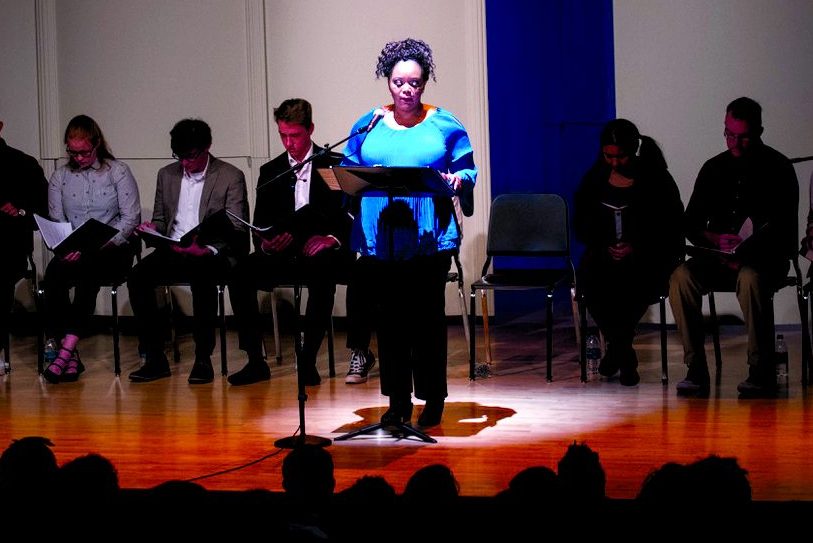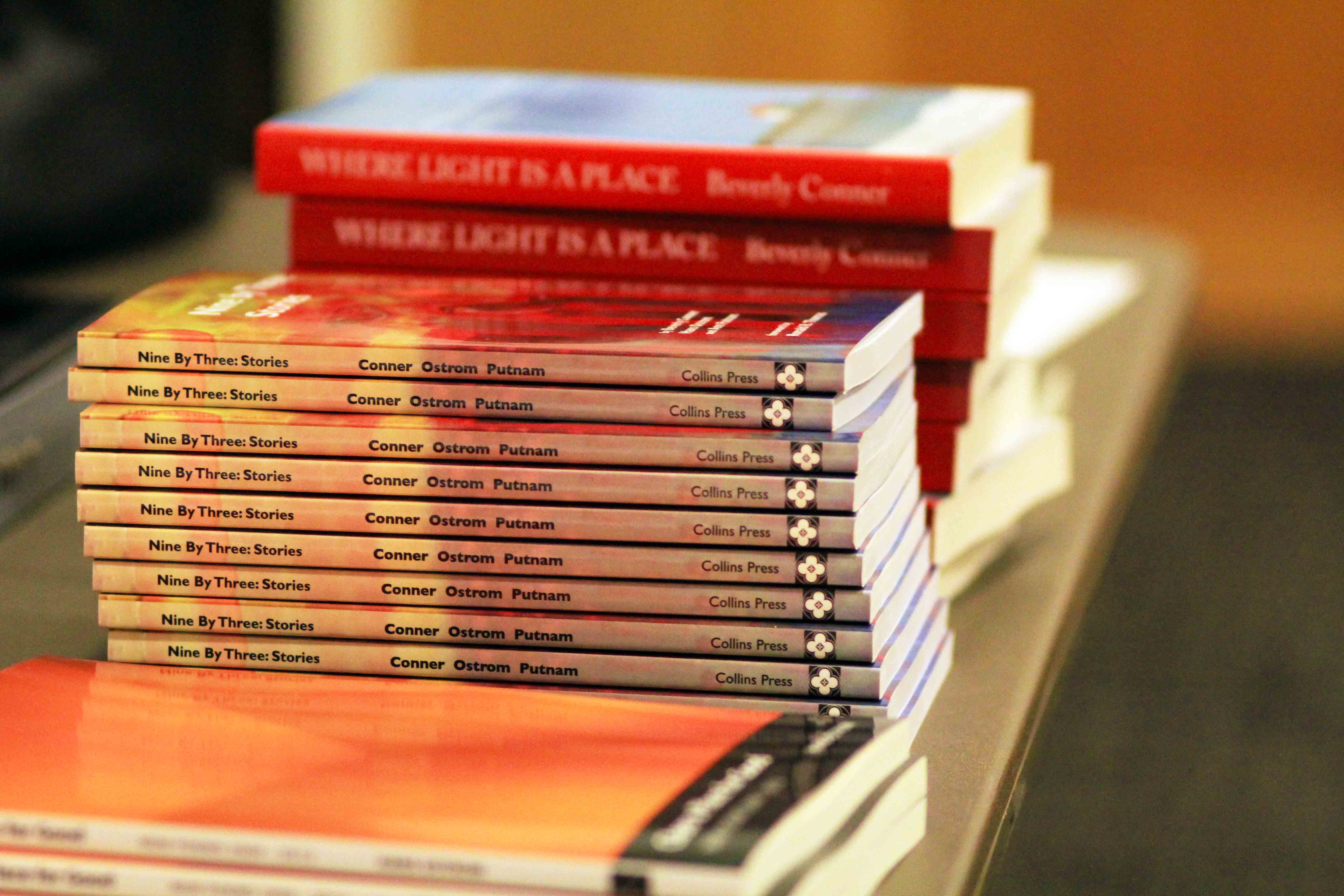
The stage was set simply for Saturday’s reading of C. Rosalind Bell’s play “My Louisiana Project”: three microphones, some slides with quotes and pictures, and chairs for the actors to sit in. It is important to note that this was only a reading and not a full production. The simplicity gave focus to the voices and narratives being shared. The word “narrative” was uttered many times throughout this weekend’s Race and Pedagogy National Conference, each presenter stressing its vitality. C. Rosalind Bell’s “My Louisiana Project” was no different, using narrative and art to engage with these issues.
Bell’s play is based almost entirely on her own narrative, which gives an extra sense of weight to the entirety of the piece, even if some of the details have been changed for the stage.
“My Louisiana Project,” directed by Professor Geoff Proehl and Professor Grace Livingston, follows Claressa Green on her journey of recovering and reconciling histories. Throughout the play, Claressa explores the pre- and post-Reconstruction era of the United States through the stories and records of her own family, resulting in a piece that works as a tightly focused personal identity project as well as a more broad-lensed look into the darker shadows of America’s history.
The play is told through a set of 19 scenes that feature a variety of voices, including our protagonist Claressa, her grandfather, her great-uncle, her godmother, slave owner Bennet H. Barrow, her biological mother and many more. The show’s fragmented narrative format weaves between time periods and geographical locations, from the 19th century to modern day, from Tacoma, Washington to West Feliciana, Louisiana.
Scenes range from Claressa’s interaction with a nurse who is disgruntled by the removal of Confederate monuments, to readings of excerpts from Barrow’s “Plantation Rules.” Early in the play, Claressa says she set forth on her “Louisiana Project” as an “excavation of being black in the 1800s.”
As Claressa’s research digs deeper, she comes upon realizations about herself and her family that add both pride and shame to Claressa’s feelings towards her ancestors and their influence on her present. Claressa’s journey is immensely difficult and some of her findings are discouraging. But she understands that these excavated stories, the stories of her family and herself, are ones that need to have light shone on them and need to be told and written by black voices.
“I think this will take me through the rest of my life,” Bell said. “‘My Louisiana Project’ never feels like it comes to a definitive end; in fact, it still feels like a beginning. The hard work of digging more deeply into the black realities of the Reconstruction era and the present while also engaging one’s self in relation to that history is work that can, and should, persist as long as humanly possible.”
“My Louisiana Project” copes with difficult histories and the multi-dimensional theme of belonging — belonging in a family, or belonging in a country, or belonging to other people. In the Q & A after the reading of the play, Bell responded to a question about how she dealt with the hard realizations found in her research. “Badly,” she said. As she expounded upon her answer, it became clear that even as difficult as some of the work she is doing is, she must continue on.
“It was ultimately not my story; it was the honoring of the people who make my life possible. It was their story,” Bell said.
If and when “My Louisiana Project” makes it to full production, I hope it doesn’t add too many bells or whistles. Saturday’s reading included and singled out the piece’s most impactful parts: the voices and their narratives.

